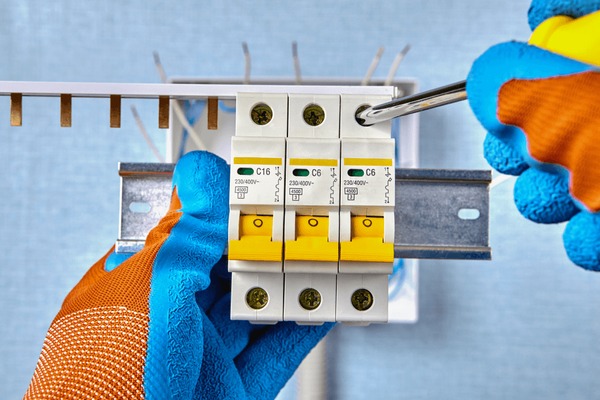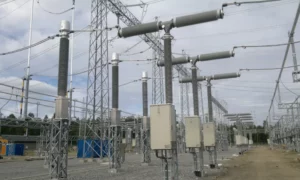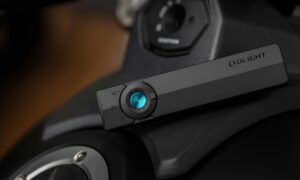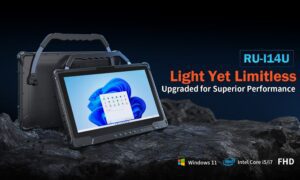Circuit breaker busbars play a crucial role in electrical power distribution systems, connecting circuit breakers and providing efficient power distribution while ensuring reliable protection against overloads in various applications, from power plants and data centers to industrial machinery and switchgear installations.
Busbar Applications in Power Distribution
Power distribution centers heavily rely on busbars for efficient electricity management and distribution. In power plants, busbars facilitate the distribution of generated electricity to transformers and manage overall power flow. Data centers utilize busbar systems to ensure reliable power distribution to servers and critical equipment, maintaining operational continuity. Hospitals implement busbar arrangements in their electrical systems, particularly in critical areas like operating rooms, to guarantee uninterrupted power supply. These applications highlight the versatility of busbars in handling high-capacity power distribution needs across various sectors, from energy generation to essential services. The centralized nature of busbar systems enhances overall electrical efficiency and simplifies maintenance procedures in these complex environments.
Industrial Use of Busbars
Industrial settings extensively utilize busbars for efficient power distribution and management. Manufacturing facilities employ these conductive strips to distribute electricity from supply feeders to internal components, ensuring a steady power supply throughout the production line. In switchgear applications, busbars play a vital role in distributing current to relays, circuit breakers, and fuses, enhancing the overall electrical system’s reliability and performance. Additionally, industrial machinery often incorporates busbars into their internal power distribution board systems, facilitating the seamless operation of various components within complex equipment.
Technical Features of Busbars
Busbars come in various configurations to meet diverse electrical needs. Current capacities range from 63A for 10mm² busbars to 160A for 35mm² versions, with operational voltage rated at 400V AC and a 4kV impulse withstand capacity. These conductive strips are available in single-phase, two-phase, three-phase, and four-phase configurations, offering flexibility for different power distribution requirements. For protection, busbars incorporate thermal protection using bimetallic strips for overload detection and integrate with circuit breakers to safeguard against faults. They also boast a rated conditional short-circuit current of 25kA, enhancing their reliability in high-power applications.
Installation Efficiency and Safety
Quick-release technology in modern busbar systems significantly enhances installation efficiency, reducing setup time by up to 50% compared to traditional wiring methods. This streamlined approach not only saves time but also allows for more efficient use of panel space. Safety features are paramount in busbar installations, with integrated touch protection including fingerproof terminal covers and no-miss busbar technology ensuring proper alignment. Additionally, protective covers and insulation provide an extra layer of safety during operation, minimizing the risk of electrical accidents in industrial and commercial settings.
Conclusion
Circuit breaker busbars are indispensable in modern electrical systems, ensuring efficient power distribution, reliability, and safety across various applications. From managing power in data centers and hospitals to supporting industrial machinery and switchgear installations, busbars provide the foundation for robust and adaptable electrical networks. Their advanced features, such as thermal protection, touch safety, and quick-release technology, make them a preferred choice for electrical professionals. As power needs continue to evolve, busbars remain a vital component of safe and efficient electrical distribution systems.
FAQs
- What is the primary function of a circuit breaker busbar?
A circuit breaker busbar facilitates efficient power distribution and connects multiple circuit breakers within an electrical system, ensuring reliable protection against overloads and short circuits. - Why are busbars preferred over traditional wiring methods?
Busbars offer superior efficiency, reduced installation time, and enhanced safety compared to traditional wiring. Features like quick-release technology and touch-proof protection make them a more reliable and convenient choice for complex electrical systems. - Where are circuit breaker busbars commonly used?
Busbars are commonly used in power plants, data centers, hospitals, industrial machinery, and switchgear installations. They are integral to systems requiring efficient and high-capacity power distribution. - What safety features are integrated into modern busbar systems?
Modern busbars include touch-proof terminal covers, protective insulation, no-miss busbar technology for alignment, and thermal protection using bimetallic strips to safeguard against electrical faults and overloads. - What are the technical specifications of a typical busbar system?
Busbars are available in single to four-phase configurations, with current capacities ranging from 63A to 160A, an operational voltage of 400V AC, and a rated conditional short-circuit current of up to 25kA. These specifications make them suitable for diverse power distribution needs.






























